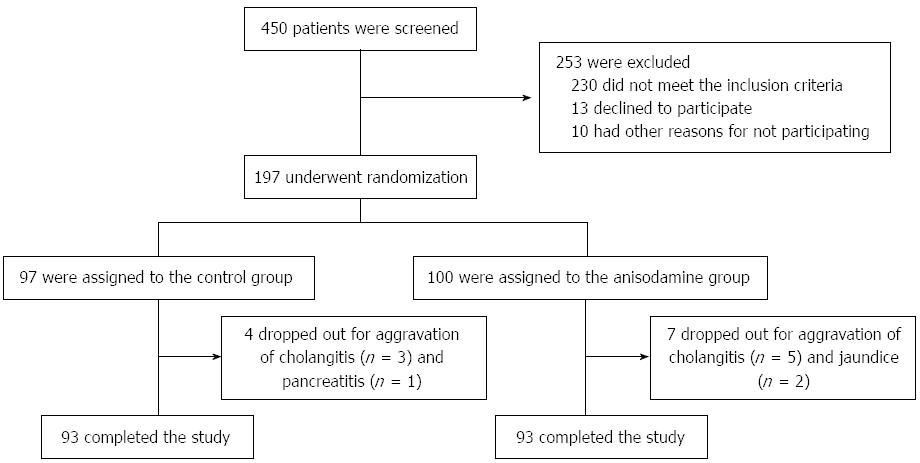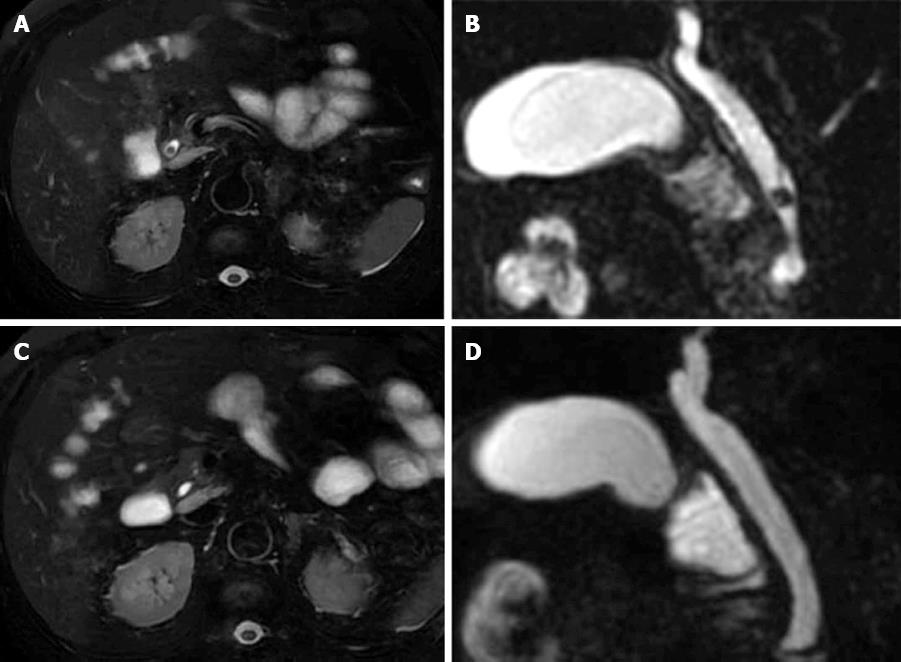Copyright
©2013 Baishideng Publishing Group Co.
World J Gastroenterol. Oct 21, 2013; 19(39): 6618-6624
Published online Oct 21, 2013. doi: 10.3748/wjg.v19.i39.6618
Published online Oct 21, 2013. doi: 10.3748/wjg.v19.i39.6618
Figure 1 Enrollment and outcomes.
Figure 2 A 60-year-old male with gallstones and a common bile duct stone of 7.
0 mm in diameter received anisodamine for 2 wk. The common bile duct (CBD) stone passed spontaneously within 2 wk after treatment. A: Magnetic resonance imaging (MRI) on cross-sectional T2-weighted imaging showing a filling defect in the CBD; B: Magnetic resonance cholangiopancreatography (MRCP) showing a 7-mm filling defect in the dilated CBD; C: Repeat MRI in the second week after conservative treatment illustrating that the CBD is clear of calculi; D: MRCP showing no signs of CBD stones.
- Citation: Gao J, Ding XM, Ke S, Zhou YM, Qian XJ, Ma RL, Ning CM, Xin ZH, Sun WB. Anisodamine accelerates spontaneous passage of single symptomatic bile duct stones ≤ 10 mm. World J Gastroenterol 2013; 19(39): 6618-6624
- URL: https://www.wjgnet.com/1007-9327/full/v19/i39/6618.htm
- DOI: https://dx.doi.org/10.3748/wjg.v19.i39.6618










